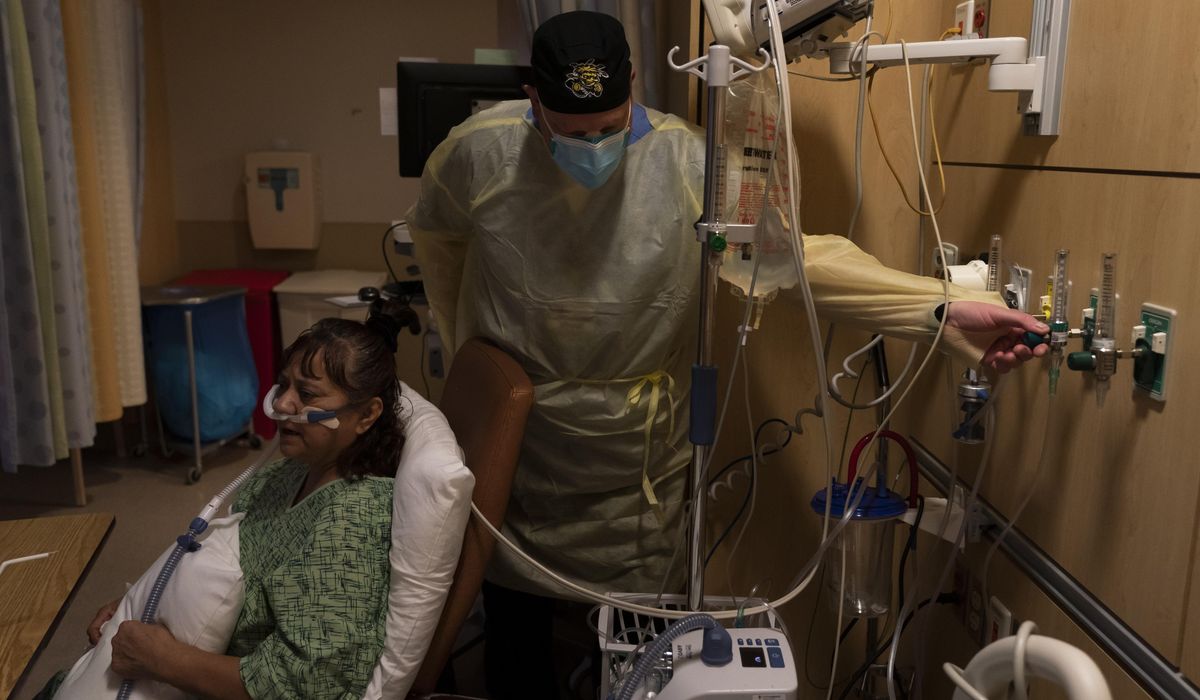


Long COVID patients who received hyperbaric oxygen therapy slept better, had less pain, felt energized and reported fewer emotional and physical problems a year later, a study has found.
A team of 10 researchers from Shamir Medical Center and Tel Aviv University in Israel published the long-range study on Thursday in Nature, a British scientific journal.
Their research builds on an earlier study in which they found reduced symptoms of “frailty, physical limitations, fatigue and cognitive deficits” in patients who received 40 daily treatments with elevated oxygen pressure.
The new study found that 31 patients who experienced clinical improvements one to three weeks later reported the changes were “persistent” even 12 months after the last treatment.
“In our original study, we demonstrated the correlation between clinical improvement and neuroplasticity,” said Dr. Amir Hadanny, a co-author of the study and hyperbaric medicine researcher at Aviv Scientific. “In the current study, we understand brain recovery is a constant gain, with persistent long-term clinical changes.”
The World Health Organization defines long COVID, or “Post-COVID-19 condition,” as acute symptoms lasting at least three to five months after infection. Symptoms include depression, anxiety, chronic fatigue and psychosomatic complaints such as the loss of taste and smell.
The new study comes as long COVID cases have flourished nationwide, outlasting the pandemic.
On Thursday, the Centers for Disease Control and Prevention reported that 6.9% of adults surveyed in 2022 said they had contracted long COVID at some point. Rates ranged from 1.9% of residents of the Virgin Islands to 10.6% of West Virginia residents.
According to the CDC’s most recent provisional count, 1,679 Americans died last year of causes related to long COVID.
According to some leading medical experts reached for comment, more large-scale research will be needed to confirm a growing body of small-scale studies touting the benefits of hyperbaric oxygen treatment.
They pointed out that while the original Tel Aviv study included a control group, the follow-up study published Thursday did not.
“There have been some encouraging results with the use of hyperbaric oxygen therapy for long COVID,” said Dr. Amesh Adalja, an infectious disease specialist and senior scholar at the Johns Hopkins Center for Health Security. “However, there is still more study necessary to be able to conclude that this is a definitively positive treatment.”
Roy H. Perlis, a psychiatrist at Massachusetts General Hospital in Boston who has researched long COVID, cautioned that “people may end up paying a lot of money for treatments that won’t necessarily benefit them” until larger clinical trials happen.
“This is an interesting study, but there is no comparison group reported, so we don’t know if the treatment ended up being any better than no treatment, or placebo treatment,” Dr. Perlis said.
The study published Thursday cited “dysfunctional brain tissue or chronic brain injury” for the persistence of COVID-19 symptoms months or years after patients no longer tested positive for the virus.
The researchers wrote that treatments involved “repeated fluctuations in pressure and oxygen concentrations, which, in turn, trigger the expression of genes and activate metabolic pathways vital for regeneration.”
For more information, visit The Washington Times COVID-19 resource page.
• Sean Salai can be reached at ssalai@washingtontimes.com.
